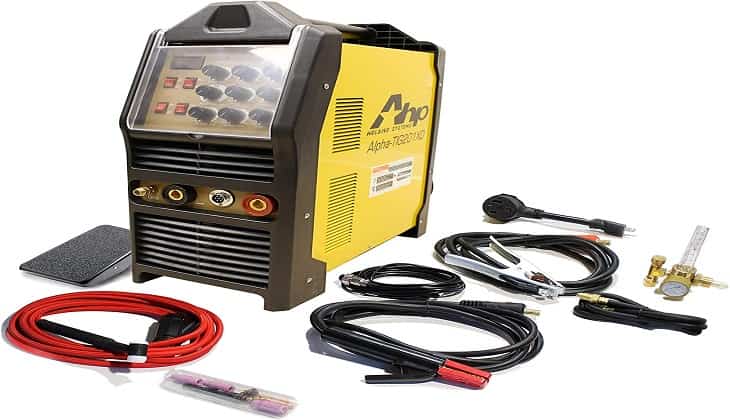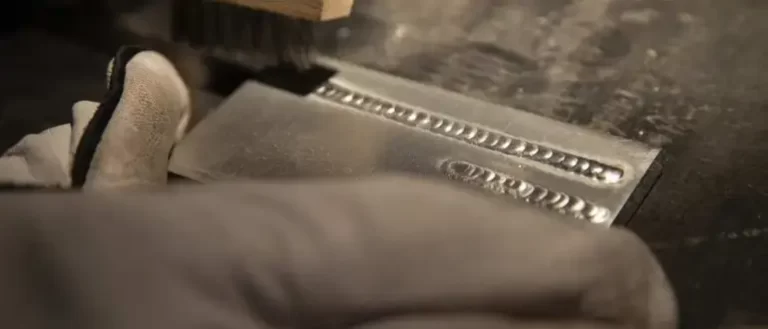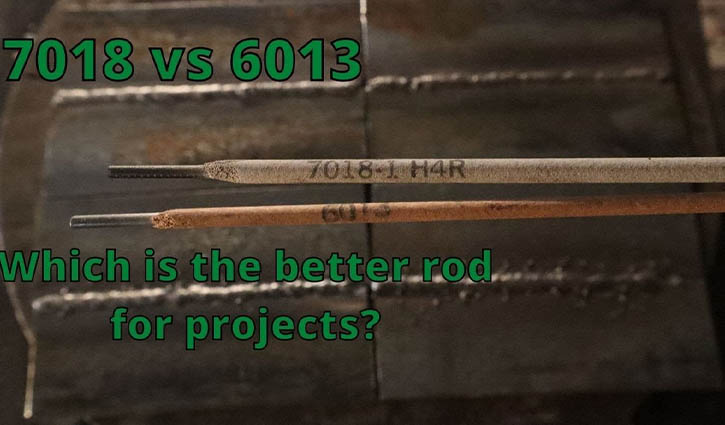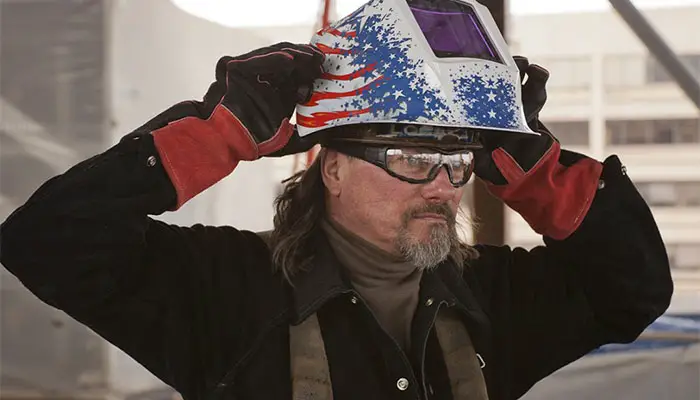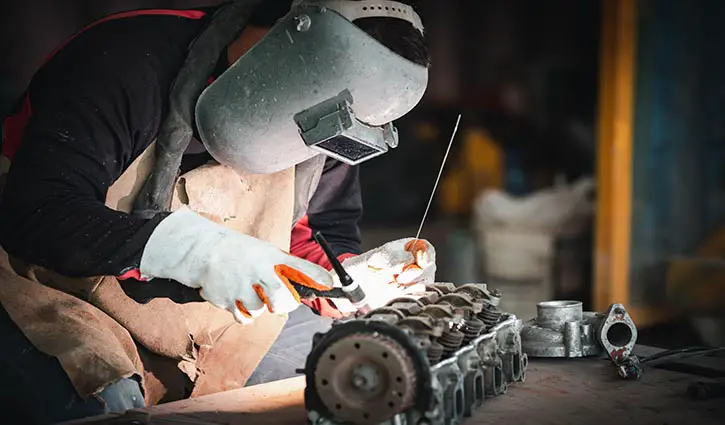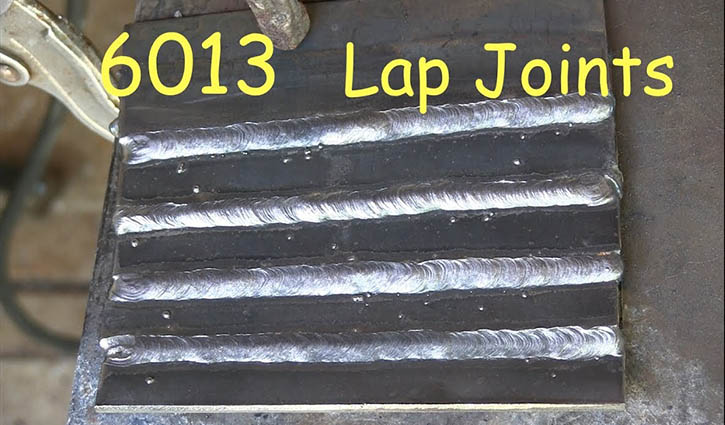Push Or Pull MIG Welding: Which One Will Be The Right For You
When it comes to welding, there are two main types of welding: push and pull. Push welding is done by pushing the welding rod through the weld zone, while pull welding is done by pulling the welding rod through the weld zone.
If you’ve been welding for a while, I’m sure you’ve heard about push vs pull MIG welding. However, today I will explain and debunk the myth of one’s better than the other or that they’re the same- whatever standpoint you take.
Table of Contents
Comparison Table Between Push and Pull MIG Welding
| Welding Types | Push | Pull |
| Metals | Steel, Aluminum | Steel |
| Penetration | Slight | Deep |
| Weld Strength | Strong | Strong |
| Weld Beads | Flatter | Rounded |
| Appearance | Nice, and Flat | Doesn’t look nice |
| Flux-cored wire | Can’t use | Usable |
What is Push MIG welding?
The push technique in MIG welding is when you push it forward as you weld. You can use this technique from right to left or left to right.
Pushing might not create deeper penetration, but in most situations, pushing creates a flatter weld and it eventually covers more surface area.
In some instances, Push MIG welding can create a stronger weld than other techniques of welding.
Pros and Cons of Push MIG welding
What is Pull MIG welding?
In the pull technique, the gun is held in front of the welder. Hence, pull it with the T-joint as you weld.
Although, the pull technique creates a deeper and stronger penetration. But, it has a few visibility problems ahead. With Pull MIG welding, the welder can create a stronger weld. Which will be deep.
Pros and Cons of Pull MIG welding
Read More: MIG Welding Troubleshooting: Common Problems And Solutions
Similarities Between Push and Pull MIG welding
Push and pull welding is a welding process in which the welder pushes and pulls the welding rod through the weld joint.
These processes are used when the weld area is too small to fit the welding rod inside the welding machine.
While welding, both push, and pull can give you a stronger weld depending on equipment and materials.
Surprisingly, In many situations, These techniques (push and pull) can be used interchangeably. However, it is wise to use one of them at a time.
Difference Between Push and Pull MIG welding
Push and pull MIG welding is a type of welding used for joining pieces of metal. The welding process begins by using a push MIG welder to create a spark. The weld is then created by using a pull MIG welder to pull the spark plug wires toward the electrode.
Some other differences can also be seen between push and pull techniques. Let’s have a quick look at them.
Visibility:
Push MIG welding allows you to watch where the welding gun is going. And while pulling, the welder van mainly watches where the weld is coming from.
Strength:
Pull technique allows the weld to produce deep penetration and have good weld strength. On the other hand, the push technique produces lesser penetration.
Many welders prefer the pull method and some others choose the push technique for MIG welding.
Push and Pull MIG Welding: Which one should you choose?
Push-pull MIG welding is a popular choice for many welders. But the question is Push or Pull MIG Welding: what’s the difference and Which is Best?
However, it is easy to use both and produces good-quality welds. The key to good MIG welds is to use a consistent weld procedure and maintain a consistent welding speed.
To use push-pull MIG welding, you need a MIG welder with a push-pull control. To start the weld, you have to push the MIG welder’s trigger handle forward and then pull the welder back to start the weld.
To finish the weld, you need to push the MIG welder’s trigger handle backward, and then release the welder.
There are several advantages to push welding over pull welding. Push welding is faster than pull welding.
Many welders prefer to see how their weld is turning out during welding. This prevents them from having to do the entire weld over again if they get to finish and realize they didn’t have the right settings.
So, it is good for slightly thin welding pieces of metal. Push welding also has a smaller chance of creating gas leaks, because the welding rod is pushed through the weld zone rather than pulled.
Read More: MIG Welding Aluminum Without Spool Gun
Frequently Asked Questions
Push and pull is a type of welding used for joining pieces of metal.
Pulling allows you to see your bead as soon as it’s created. So, you can choose the pull technique.
Welders prefer to use the push technique while MIG welding aluminum.
Pull MIG welding will give you a deeper and stronger weld. While the push technique is not very nice looking.
Verdict
Push and pull are very common names for welders. Especially, Welders who are working with gas metal arc welding.
Although, using techniques depends on your location. Welders from different areas prefer different techniques. Hence, pulling allows you to see your bead as soon as it’s created.
There are a few disadvantages to push welding, though. Push welding is less forgiving than pull welding, so it is harder to make mistakes.
Read More: MIG Welding Vs Stick Welding – What’s The Difference? (Explained)

